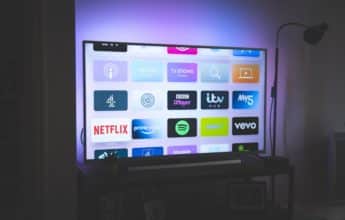Is the future of television social?
Broadcasters and content providers are quickly realizing that not only do they need functional media apps to stay connected with their audiences, they need to provide a platform that offers the ability to interact. People aren’t just passively watching content on the media apps they download – increasingly, they are actively consuming, sharing and interacting.
The shift in viewing behavior isn’t surprising. Social TV, or “second screen”, as it’s commonly referred to, has been gaining a lot of attention. But this isn’t where the convergence of social media and television ends. With more users opting to watch content on-demand, real-time social conversation is only one facet of a much more robust social television environment that content providers can capitalize on.
The Rise of Social Television
Social television – the convergence of social media and television – is growing, fast. 84% of smartphone and tablet owners say they use their devices while watching TV, and more than 1 million Americans are active on Twitter during programming.
By pr_ip Primus Inter Pares [CC BY-SA 2.0], via Wikimedia Commons
This trend isn’t ephemeral. Viewers are increasingly taking to social media as the new water cooler. Big broadcast networks and major social networks, namely Facebook and Twitter, are pushing further into social TV. Signs point to social being an essential component of a cross-platform, cross-device viewing experience.
There are some who question the future of social TV, and the skepticism is not entirely unwarranted. Last year, Gigaom published an article about social TV’s demise, citing the failure of many industry startups and a myriad of poorly executed features that simply didn’t compel users. But the article also pointed out that there are a wealth of opportunities to build social experiences around TV, with wearables, multiscreen technologies, and powerful mobile apps all likely to factor into the mix.
Another common argument is that the social TV phenomenon only applies to sports and other live broadcast events. This argument does carry merit given that on-demand viewing – not just live streaming – is a common method for watching content. While companies will have to adapt to time-shifting and on-demand audiences, social media plays a more significant role than one might think – recent data from Nielsen shows that social media activity around TV programming is driving viewers to watch programming later in the week, after original air times.
Still, broadcasters and content providers need to look beyond real-time social conversation to fully take advantage of the possibilities that social TV can potentially offer.
Social TV: Beyond Live
Back in March, there was an interesting panel at SXSW called Beyond Live, Why the L+3 Social TV Convo Matters. The idea behind it was to focus not only on trending social TV conversations but also on building dedicated fandoms. More users are choosing to watch shows on-demand, catch up mid-season, and watch between seasons. Engaging on social after the original airtime, then, is just as important as capitalizing on the live social chatter. And, doing so intelligently offers new opportunities for monetization.
So how can content providers leverage social media within their media apps to engage beyond original broadcast?
Integrated Social Screen
Integrating a social media screen into your media app lends itself best to real-time social chatter, but it can prove useful both for live streaming and for VOD. Viewers can take advantage of the feature regardless of when they are tuning in – even if they aren’t talking about the particular program they are watching.
One of the solutions we created for a client allowed users to see their social feeds on the same screen as their content in an unobtrusive way, so they could share and interact while they viewed their programming. Think “second screen” on a single screen. This feature also allowed our client to collect advertising revenue by presenting the integrated social screen as a sponsored feature.
Clip Sharing
One of the features we created for a media client allows users to share clips with their social networks quickly and easily, whether they are streaming live or watching on demand. At certain points in the programming, specific clips automatically become available to the user. The sharing function offers users another way to interact with and share the content being provided over social networks. Like the integrated social screen, this feature also serves as another source of ad revenue via a sponsorship model.
“Social TV”, not “Social Media TV”
There are many opportunities for broadcasters and content providers to enrich the social television experience and facilitate the building of communities around content. Both live and on-demand audiences are important, which brings new difficulties but also new possibilities. So far, we’ve only scratched the surface.
The real challenge is imagining social TV outside of the realms of just social media. The way audiences seek content has changed, and it will continue to evolve with the introduction of new technologies. Multiscreen technologies, virtual and augmented realities, wearables, the Internet of Things – we can expect that these will soon factor into the equation. The viewing experience as we know it will change. Broadcasters and content providers will need to stay dynamic and inventive to remain relevant.






